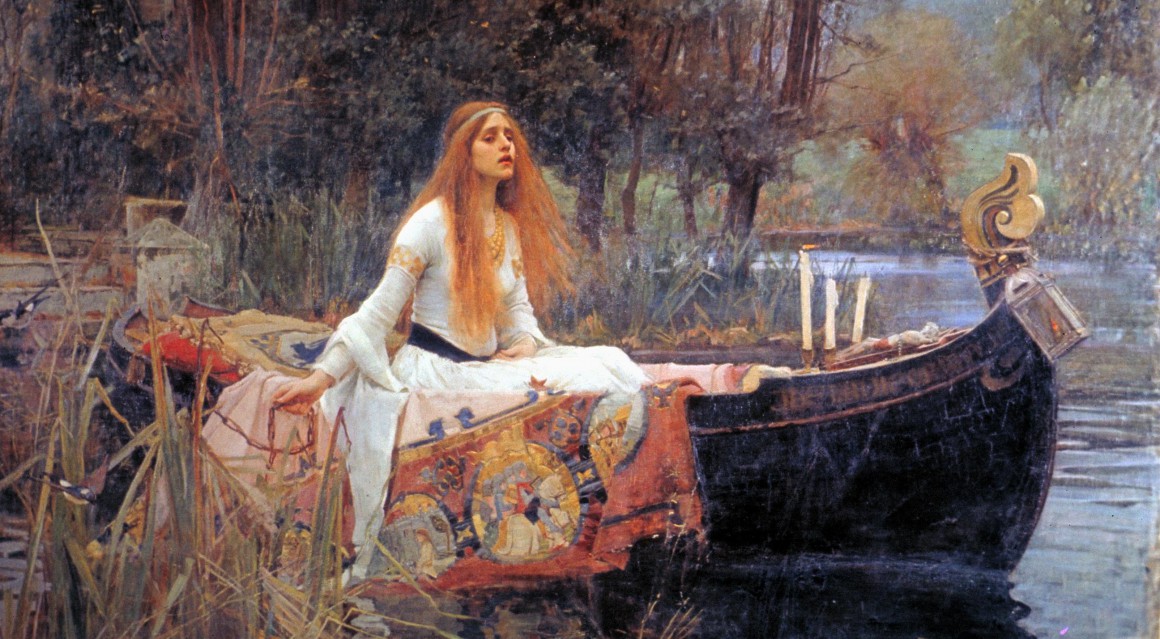Well, here I am, contemplating the conclusion of my MA in Modernities, which I have found to be an incredible learning and social experience. Of course, the most crucial part of the academic course is swiftly approaching (our thesis) yet what we have learned from our Research module has been of vital importance in educating us to broaden our perspectives when it comes to piecing the jigsaw together. Central to this developmental process has been, of course, our blog. I will admit that I approached the task of blogging my opinions, personal and academic, on topics I found interesting a panic-inducing prospect. My interaction with social media had been limited to Facebook, and even then the page was only created under duress from irritated friends who couldn’t understand why my mode of contact remained so stubbornly that of the phone. That had to change, and during September last year it did. Not only have I become comfortable with academic blogging-I’ve enjoyed it thoroughly! From casting a critical eye over my blog and its entries, I have charted my progress on the basis of three key dates. My first blog set the tone for a concept I believe to be an important part of my upcoming thesis and also had a link with the ideas of one or two more blog entries. The Wikipedia editing session yielded a great deal of information about the potential of Wikipedia as a resource, and how we could contribute to it. Finally, our mini conference preparation relayed a wealth of experience and information that was very enlightening in relation to the art of public speaking and research technique.
My first blog contemplated the term of Bohemia, and whether it can amount to an actual geographic location or rather a location in the mind. The efforts of the inhabitants of Montmartre and the Bloomsbury group stands as a testament to the efforts of artistic circles “to create an actual, physical manifestation of their liberal train of thought. With every generation of Bohemian culture, came an attempt to form a community whose society would thrive entirely on the principles of liberal art and life practices”. This glance through the possibility of trying to transform an ideal into an actual geographical location was a concept of intense interest for me. These hubs of aesthetic revolution left their mark, but more poignantly, left a landmark-a place forever associated with the cultural movement of their inhabitants, however brief. Nevertheless, I found myself musing on one particular passage of my blog as I re-read it lately. The idea that “we each create our own Bohemia through the life of the mind with the information we possess, our own world of liberal ideals that manifests itself in our artistic creations”. It didn’t take me long to make a link between this concept of psychological / physical landscape and a topic examined at length in one particular research seminar.
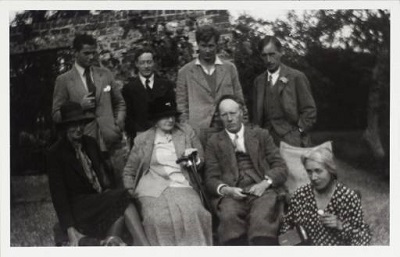
Dr Eibhear Walshe’s seminar “Elizabeth Bowen And The Landscape Of Loss” was one of the seminars I chose to blog about, and I did so out of fascination with the blurring of boundaries between psychological and actual landscapes in Bowen’s work. The reoccurring idea of “elsewhere” suggests a place of refuge, where ideas and dreams can flourish. Not too dissimilar, I thought, from another contemporary of Bowen’s. “This concept of an “Elsewhere” is highly reminiscent of the writings of Virginia Woolf, a close friend of Bowen. Woolf’s emphasis on the female space is present in all her writings, most particularly in Mrs Dalloway and A Room Of One’s Own. This search for a space to thrive in likewise dominates Bowen’s work. The theme of shifting and unstable geography crops up again and again (Walshe, 29), suggesting an ongoing search for a place that can allow for authentic existence”. To get a further grasp on such a theory, I examined Bowen’s travel memoir A Time In Rome and the extraordinary account of Livia creating her own space, “Bowen appeals to the reader to imagine the thoughts of Livia during that period; her relationship with her husband, the necessity of remaining stoic within the position she held and most poignantly her possible desire for an “Elsewhere” when the chaos of the political storm in which she lived became too difficult psychologically (Bowen, EBOOK). Dr Walshe noted a description of Livia’s private room in her villa Prima Porta, which Bowen had visited in the course of her travels in Rome and lavishly describes with acute detail. A slave probably designed the painted garden, but it was her haven, her place of security and peace. She completes the aesthetic as the owner who finds solace within its walls”.
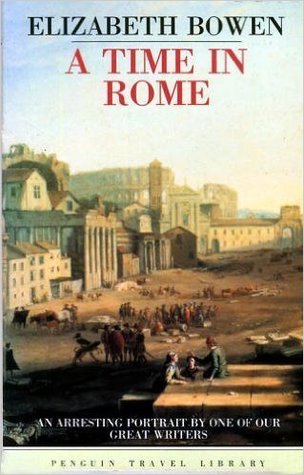
This contemplation of the characteristics of landscape also, to my delight, had found its way into the work of Walter Scott some one hundred years earlier. Not strictly in the same sense, but there are very clear similarities regarding landscape fuelling the psyche of the individual. In Waverley, I found the description of Flora’s recitation in the glen and its impact on the mind of her young suitor very much in this vein, and recorded it in my blog titled “Walter Scott: The Geography Of Imagination”.
“She purposefully chooses a glen with an appearance of a “sylvan amphitheatre” with a “romantic waterfall…that corresponds with beauty” (Scott, 117). “Mossy banks of turf” complete this scene of “romantic wildness” (Scott, 117). Flora is already aware of Waverley’s romantic disposition; she calculates the impact this will have on him. She is proved correct. Waverley in enamoured with the surroundings-and with her”.
I also realised that Waverly’s location of refuge in his youth corresponded with the concept of Livia’s place of solace, “his “favourite haunt[s]” being the “extensive…forest grounds” or “cliffy and wooded pass” which make up the “savage character” (Scott, 19) of his uncle’s estate. This bold description of an untamed wilderness perfectly characterizes Edward’s yet-untamed imagination”. Also, I found myself returning to passages of Mrs Dalloway, where Clarissa muses on her love for the city of London. London, with its metropolitan chaos, forms the very structure of Mrs Dalloway- just as the wild romantic countryside of the Highlands forms the structure for Waverley. This geographical aspect is something I hope to examine in greater detail in my thesis.
Our Wikipedia editing session came as something of a shock! We were assigned the task of choosing a page to edit that was of significant interest to us and relevant to our thesis. I chose the Byronic hero, the epitome of Romantic Era characterization that gave a definite code of identification to the romantic hero that had formerly been undefined. I found the research of such a pivotal literature figure very interesting-there was far more history behind the character than simply that of its namesake. For example, there were legions of devotees who saw to it that the character would have an infinite place in popular culture. The survival of the character had been mentioned and a few obvious literary influences, but the depth of the admiration responsible for its survival wasn’t mentioned. I mentioned this in my blog “Editing Wikipedia: A Wider Consideration”.
“The serious “fandom” surrounding Byron was not mentioned–strange, given that it played an integral part in keeping the interest in his work alive… One of my main sources of help was Fiona McCarthy’s Byron: Life And Legend. It had information aplenty regarding the fanatical admiration of Byron and his work that thrived long after the poet’s death. I was particularly interested in this focus on the social and cultural impact of the Byronic character, and believed it ought to be added to the synopsis on Wikipedia”.
This notion of the preservation of characterization is another aspect I have taken note of for my thesis. However, another piece of information I gathered in my research caught my eye in relation to a seminar we had had some months previously.
“Similarly, Charles J. Clancy’s article examining the potential for a Byronic heroine in Don Juan was also very interesting. To take a character that had long been an established male figure and researching the possibility of a female character assuming the role broadens the perspective on the concept, and would be valuable to anybody researching the topic. Clancy makes apt connections between the character of Aurora Raby and the elements of the Byronic character”.
Casting this light on feminine representation and perspective was reminiscent of Dr Heather Laird’s seminar “Writing Irish Working-Class Mothers”. The seminar delved into the character of the mother, stripping away the idea of it being one-dimension.
“Their representations vary and are numerous … Dr Laird offered examples of the “good” dependable put-upon mother (The Countrywoman) and the “monstrous” mothers who destroy the ideology of nurturing maternal goodness in light of their impoverished circumstances (Katty The Flash). Various other examples, such as single motherhood and biological vs non-biological motherhood were also included”.
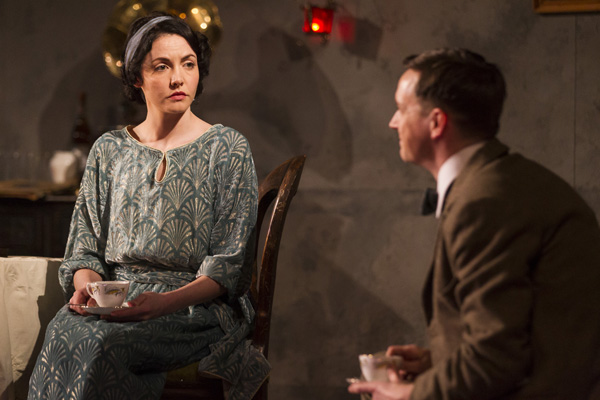
This layered concept of motherhood and the conflict of emotion it brings portrays women in an entirely different light, exposing the hardships in the efforts to survive and struggle for an identity that can be apart from the traditional family-orientated stereotype, “the enforcement of the aesthetic of the “good” wife and mother is something each of the characters have to live with in some form or the other. Whether they acquiesce to the concept or not, it is part of society’s make-up and therefore the prism through which they are looked upon. Such an ideal can have potentially fatal consequences; the performance of perpetual and unchanging dependability and endurance claims the life of Molly Baines in The Countrywoman. Juno in Sean O Casey’s play Juno And The Paycock was also referred to as a figure who resigned herself to the aesthetic of the dependable wife for much of the play. Her decision to leave her reckless husband at the end of the play is abandonment of the ideal and conformant with it; she is leaving, but for the sake of her daughter”. I found myself identifying this idea of the complexity of womanhood with Waverley when comparing the compliant, dutiful Rose and passionately independent Flora, and also in Mrs Dalloway when examining Clarissa’s strained relationship with her daughter and sense of entrapment in her role as the “perfect hostess”.
Overall, I found the editing session very enjoyable, albeit a little nerve-wracking considering we were racing against the clock to get our task completed. The frantic tapping of the keyboards is probably my most prominent memory of that afternoon! Prior to the afternoon in question, we had each set up our own account with Wikipedia to enable us to make the required changes. Researching the materials and information necessary did take some time but it made the process of editing very straightforward on the day. Also, it raised the possibility of Wikipedia as a legitimate research source, should academics persist in editing it accurately and informatively. The process required precision of what needed to be changed or updated and my account of it in my blog was as follows:
“I began with the “Byronic Heroine”. As the page began with the characteristics of the Byronic figure, it seemed the more practical beginning. I also corrected a quote about the comparison with Werther by adding the text that made the correlation into the “Works Cited”. I then moved on to the section concerned with fans of the Byronic image-both the “fandom” and the Byronic heroine passages were given their own section heading and not added to sections that already existed. There was a literature passage present on the page which I could add the information I had researched in relation to Charles Dickens and the Byronic figure. As Charles Dickens’ writings had never really been associated with the idea, I thought it might be a useful addition to the list of literature comparisons present.”
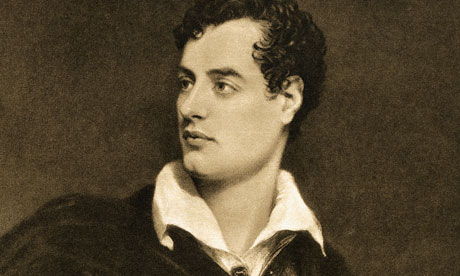
Overall, I believe we all found it an enjoyable and educating task-helped along, of course, by chocolate biscuits!
Of course, the grand finale that was the mini conference was probably the standout moment of the MA experience for a lot of us. We each chose a topic in relation to our thesis and put together a presentation. Sounds easy? Not when the twenty slides are restricted to twenty seconds, or Pecha Kucha to give it its proper term. My MA thesis title will be “The Preservation Of Literary Traditions In The Works Of Walter Scott And Virginia Woolf”. It is a broad title, so I narrowed my topic down to one element for the presentation- the role of the hero in the works of both authors, specifically the novels Waverley and Mrs Dalloway. Comparing two drastically different genres was challenging, and I’ll probably find it even more so when writing for my thesis begins in earnest. Taking into consideration the Modernists’ heavily critical stance of the Romantic genre (Virginia Woolf protested against Jane Austen being held sacred and above criticism in A Room Of One’s Own) looking for direct similarity was off the table. Or maybe not…..
By looking at the established blueprint or characteristics of the literary hero, I realised that what both authors had in common were their challenges to such anchored ideals. Again, I recorded this in my log about the conference, “Textualities 2016: A Conference Contemplation”.
“My topic was the heroic figure and its preservation and representation in literature in the various genres down through the years… it is such a complex figure, a seemingly stoic mould that was broken down and subjected to contemporary experimentation- which is what makes Scott and Woolf’s take on the figure so important”. So I looked for instances that they manipulated and changed the established “heroic figure” in their novels without doing away with it-for example, the possibility of a female hero. Again this reverted back to the issue of feminine representation, and over the course of the presentation I gave examples from both Waverley and Mrs Dalloway. In one of my more recent blogs I delved into the possible influences of such varied representations of female heroines in Woolf’s work and examined her relationship with the unconventional artist Dora Carrington through this prism:
“Woolf was intrigued by Carrington and documented with fond fascination the goings-on of her unorthodox lifestyle. Perhaps she sensed a kindred spirit. Carrington flew in the face of convention in every way possible in her personal life. Woolf’s writings fiercely upbraided the restrictions society imposed upon women, barring them from developing their true characters. Carrington’s complicated relationship with her own femininity and her guarded manner relating to her artwork depict someone who might well have been a heroine in one of Woolf’s novels”.
Surrounded by such strong-willed independent figures it is a fairly safe bet that Woolf did
nors Dalloway. The character of Flora in Waverley possesses a similar stubbornness to Sally’s; she is determined to live and die a rebel of the romantic cause, as alluded to in “The Geography Of Imagination”.
“The scene in the glen is her effectively acting out her own fantasy of patriotism which she wills with all her heart to come to fruition (Millgate, 49). She is determined to lead a life of romantic extremes, with a brilliantly executed performance from start to finish”.
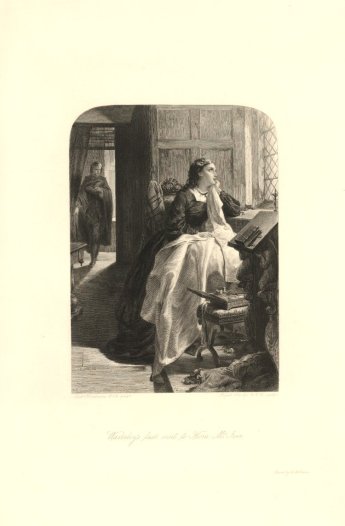
As to the conference itself it was fantastic. The aura of support and friendship was wonderful, and helped to calm the tension that inevitably occurs when standing up in front of a group to address them. “Question Time” was lively and informative; everybody took an interest in what others else had to say, and the wide range of topics kept it original. I noted this in my blog:
“ Regarding the range of topics covered in the conference, it was extensive and the originality of each presentation was amazing . From Beowulf to Shakespeare to Scott to Bronte to W.H.Auden to Akira to John Malkovich-the list was endless. The enthusiasm shone through, completely engaging the audience from start to finish and making it a very enjoyable experience”.
As I now contemplate the end of the course, I reflect happily on the experience. If I were to assess my blog and its relevance to my thesis, I would say it has largely helped me look at issues I wish to discuss in my thesis from different perspectives, and in greater detail.
Works Cited
Scott, Walter. Waverley Or Tis Sixty Years Since. Oxford: University Press, 2015.
Millgate, Jane. Walter Scott The Making Of A Novelist. Edinburgh: University Press, 1984.
Gerzina Gretchen. Carrington: A Life. New York: W.W. Norton & Company, 1989.
Walshe Eibhear. “The Smile Of Livia: Elizabeth Bowen and Augustan Rome”. Classics Ireland Vol.16. Dublin: Classical Association of Ireland, 2009. <http://www.jstor.org/stable/41408136>
Bowen Elizabeth. A Time In Rome. EBOOK. < https://books.google.ie/books?isbn=1446496864>
Clancy, Charles J. “Aurora Raby In Don Juan: A Byronic Heroine”. Keats-Shelley Journal Vol. 28. New York: Keats-Shelley Association Of America, 1979.
Harvey, William W. “Charles Dickens And The Byronic Tradition”. Nineteenth-Century Fiction Vol. 24 No.3. California: University Press, 1969.
McCarthy, Fiona. Byron: Life And Legend. London: John Murray, 2002.
Thorslev, Peter L. “The Byronic Hero And Heroic Tradition”. The Byronic Hero. Minnesota: University Press, 1962.
The Bloomsbury Group. Google Images. <http://virginiawoolfblog.com/>
A Time In Rome. Google Images. <http://www.goodreads.com/book/show/2987553-a-time-in-rome>
Juno And The Paycock (Gate Production 2016). Google Images. <http://www.gatetheatre.ie/production/JunoandthePaycock2016>
Lord Byron. Google Images. <http://www.theguardian.com/books/2012/jan/30/poem-of-the-week-lord-byron>
“Waverley’s Last Visit To Flora McIvor”.Google Images <http://www.britishmuseum.org/research/collection_online/collection_object_details/collection_image_gallery>
